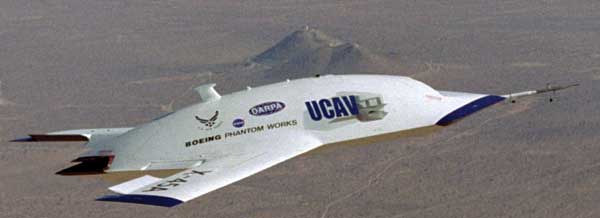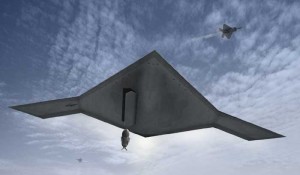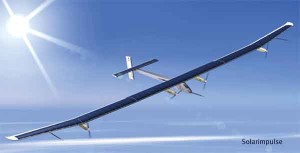While developments in unmanned systems are proceeding at a frenetic pace, some strategic thinkers are of the view that the UAV can only complement the manned aircraft, not completely replace it. Especially in scenarios such as aerial combat and in the employment of air power in a nuclear war, according to some observers, the man inside the machine will continue to be indispensable. Nevertheless, all indications point towards a radical shift in the manner in which war in the air will be waged. Just as manned combat aircraft achieved dominance over the battlefield in a matter of three decades after the first heavier-than-air machine took to the air, so also unmanned systems could well take over the critical role of air power in future conflicts in a matter of a few decades from now. The employment of unmanned systems over the battlefield that we witness today belongs merely to the first generation in aerial robotics. Truly astounding systems and capabilities difficult to imagine today, await future conflict scenarios. Thus, the belief in some quarters that the days of the manned aircraft are numbered could well be within the realms of possibility. It appears that the focus is destined to shift from the cockpit in the air to (real time imaging) video screens in cubicles on the ground!
Extending Warfare into Space
Despite the controversy and debate over ‘weaponisation’ of space and a degree of hesitation amongst the leading aerospace powers to do so explicitly, there is little doubt that led by the US, aerial warfare will eventually extend into space placing demands on technology for new weapon systems. The new systems would preferably be in the unmanned category to minimize cost and eliminate vulnerability as also other logistical complications associated with having a human being on board.
Already under development in the US is the High Altitude Airship, a large size UAV that with infinitely long endurance and in-flight replenishment of fuel by an unmanned refueling vehicle, could loiter at 100,000 ft without interruption for months, even years, programmed to carry out activities such as surveillance, communication relay, intelligence gathering and early warning against ballistic missile attack. This UAV will function much like a satellite but would be less complicated to launch and slot into position. Also, as it would be operating at much lower altitudes, it will be more effective and appropriate for tactical use.
Other unmanned vehicles that would be capable of military operations in space are the American X37 Orbital Test Vehicle and the X41 Falcon, a reusable space vehicle expected to undertake its maiden flight in 2010. Still other key UCAV prototypes under development are the Boeing X45 and the Northrop Grumman X47. The two are approximately of the same size but the latter is capable of operating from a carrier deck. The prototypes are expected to commence flight trials in 2011. The US is really not alone in the business of UCAVs as similar systems are under various stages of development in the UK, Russia, France, Israel, Italy, South Africa and China.
But perhaps the most fascinating is the Japanese concept of robotic warfare in space which is universally regarded as ‘the final frontier for mankind’. The experimental mission to validate the concept envisages a space vehicle carrying armed robots to be launched from the earth. Once in orbit, the robots will be released and will on command from the earth, carry out combat amongst themselves. The experiment, if successful, would open up unimaginable possibilities of warfare in space. What appears to be science fiction today may be a reality in the future!
Commercial Aviation
Dwindling resources of fossil fuels, their rising costs and mounting concerns regarding emissions of greenhouse gases accelerating climate change, will have a major impact on commercial aviation in the years to come. The imperative need to reduce consumption of fossil fuels and cut emission of greenhouse gases, has inspired research into areas such as light weight materials to make less heavy airplanes, fuel efficient aero engine designs and identification of alternative sources of power for propulsion of commercial aircraft.
As commercial aviation is one of the fastest growing sources of global CO2 emissions, inaction in this regard is bound to impose a substantial cost penalty on air travel as also depress the growth of commercial aviation in the coming decades. Vigorous efforts by the scientific community therefore are on to find new technical solutions to make the industry more efficient and environmentally compatible. Airframes of new generation of airliners such as the Boeing 787 Dreamliner, will have a high content of composites, in excess of 50 per cent, as opposed to present generation that have around 30 per cent. Although, future generation airliners will thus be much lighter than the present day aircraft and will help reduce fuel consumption, reliability and structural integrity of airframes with high percentage of light weight materials, will be a serious issue designers have to contend with to assure the desired levels of safety. Problems in the development of the Boeing 787 Dreamliner are an indication of latent problems in this area of development.
It is also believed that the future of commercial aviation will hinge on progressively increasing use of bio-fuels. Several airlines have carried out successful flight trials with bio-fuels and prima facie the concept appears technically and economically viable. However, large scale production of bio-fuels to cope with the demands of expanding commercial aviation could get mired in the debate over use of land and water resources for the production of bio-fuels as against need to produce food for the ever growing population. Algae-based bio-fuel for aviation holds better promise in the future for commercial aviation as it does not require land for its production. However, researchers are of the view that it may take over a decade and a half before algae-based aviation grade bio-fuel can be produced in the required quantities. Operating at the present level of technology, use of bio-fuels may reduce consumption of fossil fuels but may not help lower emission levels. Despite these difficulties however, there is concerted effort to achieve a target of about 10 per cent of the total aviation fuel mix by 2050.
Another source of power for propulsion of commercial aircraft in the future could be solar energy of which there is and will continue to be inexhaustible supply available for all times to come at extremely low cost. While solar powered experimental machines have been flying for some years now, but the world’s first true solar powered aircraft, the Solar Impulse with a pilot on board, carried out its maiden test flight early December 2009. Powered by engines driven by electricity derived from the energy from the sun, the Solar Impulse is the most environmentally benign machine and a dream come true for the green lobby. The short duration flight of the solar powered airplane was a precursor of the 36-hour non stop flight over Switzerland planned in not too distant a future, possibly in 2010. The objective of the 36-hour mission is to demonstrate the feasibility of a complete day-night-day cycle propelled solely by solar energy. Later, the Solar Impulse is likely to attempt non stop circumnavigation of the earth.
n many ways, the first flight of the Solar Impulse was similar to that by the Wright Flyer at Kitty Hawk in 1903. However, commercial application of solar energy to power passenger carrying aircraft is years away and is perhaps the most attractive but formidable challenge aeronautical engineers and scientists are grappling with today. The future is bright and hopeful even as research is underway to find solutions that would make it possible to harness solar energy in quantities large enough to propel huge passenger carrying aircraft. This will be ‘a giant leap’ in the history of aviation that could revolutionize the commercial aviation industry.







